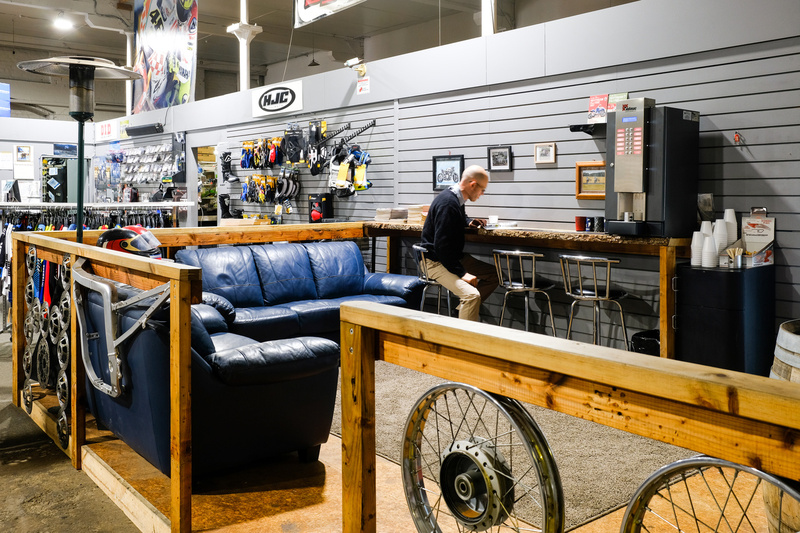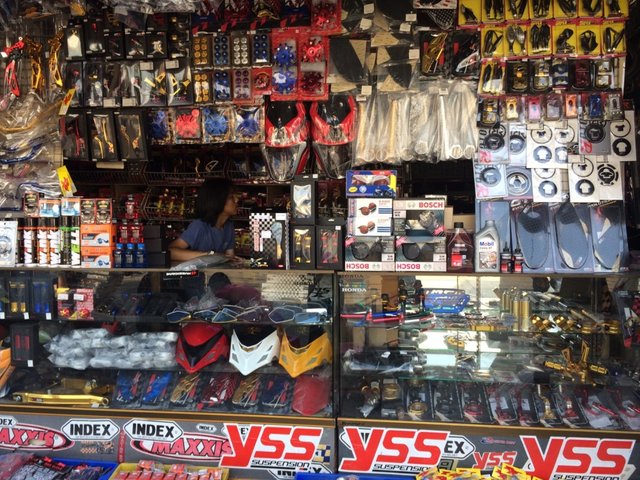Your Go-To Motorbike Shop for Quality Parts and Accessories
Your Go-To Motorbike Shop for Quality Parts and Accessories
Blog Article
Comprehending the Vital Components of a Motorbike: A Comprehensive Overview for Lovers
For motorbike enthusiasts wanting to raise their riding experience and ensure their bikes run efficiently, understanding the vital parts of a bike is extremely important. Each aspect, from the engine's detailed workings to the important role of the stopping devices, not only affects performance yet likewise safety and security and convenience. This overview will stroll with the essential components that every cyclist ought to know with, making it possible for notified selections in both maintenance and possible upgrades. As we start this exploration, one must ask: exactly how does each element engage to create the smooth experience every fanatic seeks?
Engine Components

The camshaft plays an important duty in regulating the timing of the engine's valves, making sure the specific opening and closing necessary for effective gas and air consumption, along with exhaust expulsion. This timing is critical to maintaining ideal engine performance and effectiveness. Additionally, the carburetor or gas injection system, depending on the motorbike version, is accountable for mixing air with fuel in the proper ratio for combustion.
The cooling system, either air or liquid-based, works to preserve the engine's temperature within operational restrictions, stopping overheating and ensuring long life - mx gear nz. Each element, carefully designed and incorporated, adds to the seamless operation of the engine, specifying the motorcycle's power result and general efficiency
Transmission System
Important to the motorcycle's functionality, the transmission system makes certain effective power transfer from the engine to the wheels. This system consists of a number of essential parts, including the clutch, transmission, and last drive, each playing an important role in converting the engine's power right into activity. The clutch, usually operated by a hand bar, offers to engage and disengage the engine from the transmission, enabling smooth equipment changes and regulated velocity.
The transmission, frequently referred to as the transmission appropriate, contains a collection of equipments that motorcyclists can by hand shift with to readjust the bike's speed and torque result. These equipments are arranged in a series that makes it possible for the bike to speed up smoothly and preserve optimal engine performance across different rates. Many bikes utilize a consecutive transmission, requiring the rider to change equipments in a fixed order.
Braking Devices
While recognizing the transmission system is key to taking advantage of a motorbike's power, similarly important is the capability to manage and quit that power properly, which is where stopping mechanisms enter into play. Brakes are important for safety and performance, giving the motorcyclist with the needed control to navigate different terrains and conditions. Usually, motorbikes feature 2 types of stopping systems: disc brakes and drum brakes.
Disc brakes are a lot more prevalent in modern-day bikes because of their exceptional efficiency. They contain a brake disc, caliper, and pads. When triggered, the caliper squeezes the brake pads versus the spinning disc, converting kinetic energy right into warm, therefore slowing down the wheel. This system supplies better warmth dissipation, regular performance, and boosted quiting power, specifically in wet conditions.
Conversely, drum brakes, though much less typical, are still discovered in some motorbikes. They work by pressing brake footwear against the internal surface area of a drum affixed to the wheel. While usually less efficient in warm dissipation and quiting power, drum brakes are easier and a lot more affordable.
Comprehending these stopping systems' nuances enables cyclists to preserve their motorbikes correctly and value the engineering that ensures risk-free and efficient stopping.
Suspension and Guiding
Suspension and steering systems are crucial components that substantially affect a bike's handling and adventure convenience. The suspension system, being composed of forks at the front and shock absorbers at the back, soaks up roadway irregularities, boosting stability and control. Front forks, commonly telescopic or upside down, visit this web-site compress and rebound to minimize effects, while back shock absorbers preserve tire call with the road, essential for grip and safety.
Steering, centered around the handlebars, connects the cyclist to the motorcycle's directional control. The steering head bearings make certain smooth operation, allowing specific ability to move. Appropriate alignment and maintenance of these bearings are essential for foreseeable steering reaction and minimizing cyclist tiredness.
The suspension's adjustability is another critical facet; preload, damping, and rebound setups permit customization to fit different riding designs and problems. This versatility is vital for enhancing performance, whether navigating urban roads or taking on rugged routes. Developments like electronic suspension systems offer real-time modifications, improving trip quality across diverse surfaces.

Electric Equipments
After making certain a smooth and controlled experience via efficient suspension and steering systems, interest transforms to the electrical systems, a critical facet of modern-day motorbikes. These systems play a critical duty not only in beginning the engine however likewise in powering different parts that boost the capability and safety of the motorbike.
At the heart of a motorcycle's electric system is the battery, which shops electrical power required you can find out more for beginning the engine and powering supporting systems - motorcycle parts nz. The alternator or generator, paired with the rectifier-regulator, guarantees the battery stays billed while the motorcycle is in procedure, converting mechanical power into electrical energy and maintaining voltage levels
The ignition system, one more essential part, is accountable for sparking the air-fuel blend in the engine's cylinders. Modern motorcycles typically make use of an electronic ignition system, providing greater efficiency and reliability contrasted to conventional systems.
Lighting systems, consisting of headlights, tail lights, and indications, are likewise vital, making certain presence and security for the cyclist. Additional digital parts such as sensing units, control units, and shows add to advanced attributes like fuel injection administration, anti-lock braking systems (ABDOMINAL), and electronic dashboards, further improving the riding experience.
Final Thought
A comprehensive comprehension of a bike's vital elements, including the engine, transmission system, braking mechanisms, suspension, guiding, and electrical systems, is indispensable for lovers intending to optimize efficiency, convenience, and security. Proficiency of these components enables for notified choices regarding upkeep and upgrades, eventually boosting the riding experience. By incorporating this expertise, motorcyclists can ensure their bikes run at peak effectiveness and reliability, thereby taking full advantage of both pleasure and longevity of their vehicles.
For bike enthusiasts looking to boost their riding experience and guarantee their bikes run smoothly, recognizing the necessary parts of a motorbike is extremely important.Important to the bike's functionality, the transmission system guarantees effective power transfer from the engine to the wheels.While recognizing the address transmission system is key to utilizing a bike's power, similarly vital is the ability to regulate and stop that power successfully, which is where stopping devices come into play. Normally, bikes feature 2 kinds of braking systems: disc brakes and drum brakes.
An extensive understanding of a motorcycle's important components, consisting of the engine, transmission system, braking devices, suspension, steering, and electrical systems, is important for enthusiasts aiming to maximize convenience, efficiency, and safety.
Report this page